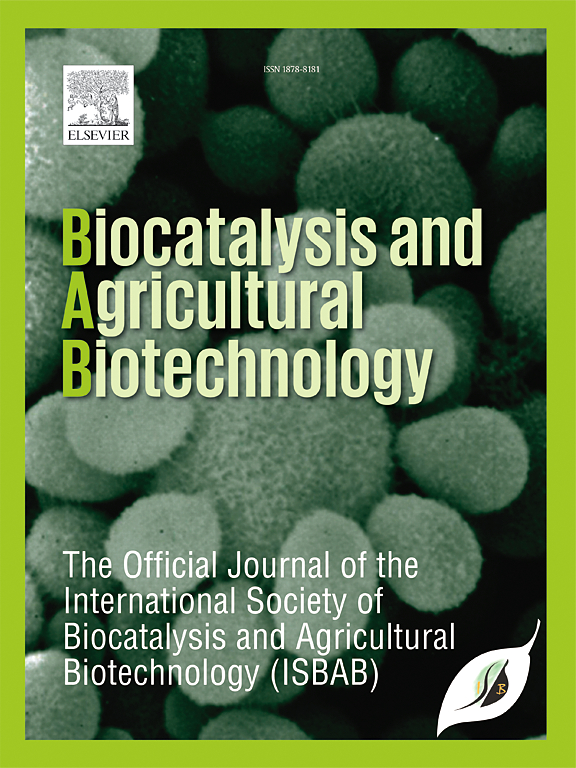增强土壤稳定性:利用植物提取物改变膨胀土的阳离子交换能力
IF 3.8
Q2 BIOTECHNOLOGY & APPLIED MICROBIOLOGY
引用次数: 0
摘要
膨胀土在建筑工业中被认为是有问题的,因为存在特定的粘土矿物,在湿度变化时表现出显著的体积变化。当这些矿物质与水接触时,涉及阳离子和阴离子的离子相互作用激活了土壤的膨胀行为。在各种土壤改良技术中,土壤稳定是工程师和岩土专业人员最古老和最广泛采用的方法之一。本文介绍了一种创新的、环境可持续的方法,该方法将土壤和植物化学结合起来,利用土壤的阳离子交换能力(CEC)和生物植物提取物的特性。CEC是指土壤吸附和交换带正电离子(阳离子)的能力。当自由阳离子的可用性受到限制时,土壤的交换能力就会降低,这可能导致某种形式的自然稳定。CEC可通过多种技术进行评估,亚甲基蓝斑点试验因其简单、成本效益和快速执行而成为首选方法。植物提取物富含阴离子,可与土壤阳离子相互作用,有效中和其作用,有助于稳定和增强强度。这种地质生物稳定方法在成本效益和适用性方面显示出良好的效果。它在公路路堤边坡稳定、路基改善、森林保护工作和更广泛的生态保护倡议方面提供了潜在的应用。本文章由计算机程序翻译,如有差异,请以英文原文为准。
Enhancing soil stability: using plant extracts to modify cation exchange capacity in expansive soils
Expansive soils are recognized as problematic in the construction industry due to the presence of specific clay minerals that exhibit significant volume changes upon moisture variation. When these minerals come into contact with water, ionic interactions involving cations and anions activate the swelling behavior of the soil. Among various soil improvement techniques, soil stabilization remains one of the oldest and most widely adopted methods by engineers and geotechnical professionals. This paper introduces an innovative, environmentally sustainable approach that integrates soil and plant chemistry, leveraging the cation exchange capacity (CEC) of soil and the properties of biological plant extracts. CEC refers to the soil's ability to adsorb and exchange positively charged ions (cations). When the availability of free cations is limited, the soil's exchange capacity reduces, which can lead to a form of natural stabilization. CEC can be assessed through various techniques, with the methylene blue spot test being a preferred method due to its simplicity, cost-effectiveness, and rapid execution. Plant-based extracts, rich in anions, can interact with soil cations, effectively neutralizing their effects and contributing to stabilization and strength enhancement. This geobiological stabilization method has demonstrated promising results in terms of cost efficiency and applicability. It offers potential for use in highway embankment slope stabilization, subgrade improvement, forest conservation efforts, and broader ecological preservation initiatives.
求助全文
通过发布文献求助,成功后即可免费获取论文全文。
去求助
来源期刊

Biocatalysis and agricultural biotechnology
Agricultural and Biological Sciences-Agronomy and Crop Science
CiteScore
7.70
自引率
2.50%
发文量
308
审稿时长
48 days
期刊介绍:
Biocatalysis and Agricultural Biotechnology is the official journal of the International Society of Biocatalysis and Agricultural Biotechnology (ISBAB). The journal publishes high quality articles especially in the science and technology of biocatalysis, bioprocesses, agricultural biotechnology, biomedical biotechnology, and, if appropriate, from other related areas of biotechnology. The journal will publish peer-reviewed basic and applied research papers, authoritative reviews, and feature articles. The scope of the journal encompasses the research, industrial, and commercial aspects of biotechnology, including the areas of: biocatalysis; bioprocesses; food and agriculture; genetic engineering; molecular biology; healthcare and pharmaceuticals; biofuels; genomics; nanotechnology; environment and biodiversity; and bioremediation.
 求助内容:
求助内容: 应助结果提醒方式:
应助结果提醒方式:


